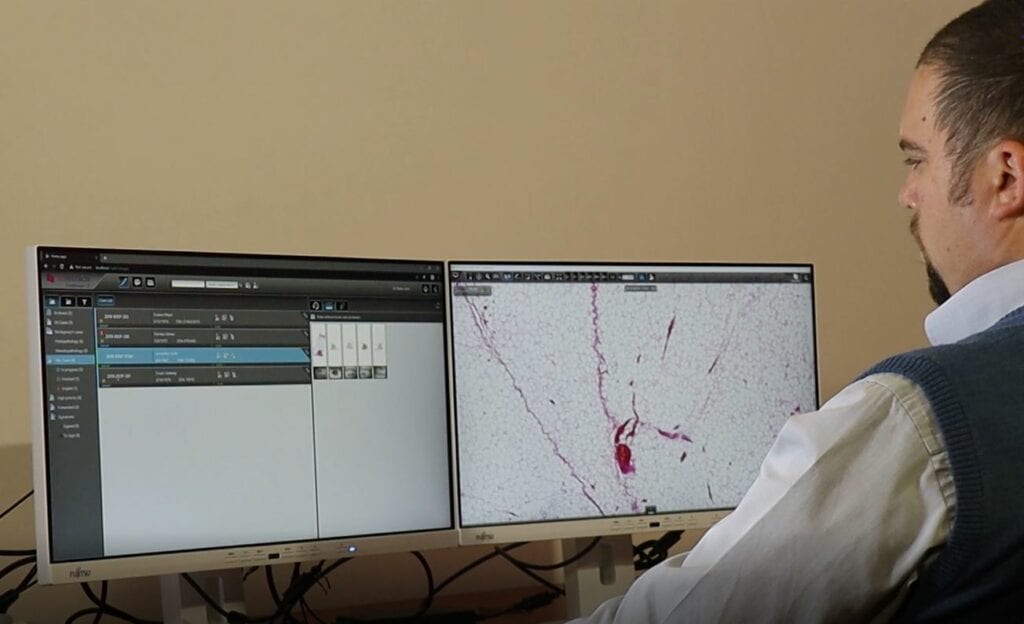Digital pathology offers 7 key benefits that are best categorized as patient benefits and non-patient or efficiency benefits.
Patient Benefits
Patient benefits of digital pathology are fairly obvious, although harder to quantify.
Shorter Waiting Times
Thanks to high-throughput, high-speed whole-slide scanners and supporting software, the time from case registration to final report is substantially shorter.
Digital tools speed up the workflow thanks to automation, faster and easier access to patient and case information and enhanced collaboration between pathologists, even at physically remote sites. Turnaround times are thus reduced.
Increased Precision of Diagnosis
High-resolution digital slides provide better image quality and more detail for the pathologist with multiple viewing options, team annotations, and Z-stack or 3D imaging. Also, digital slides from previous cases are easier to access for comparative analysis. The room for error is reduced thanks to barcode-based identification of slides. Additionally, digital image analysis tools help automate and quantify findings, reducing or eliminating manual work (e.g. manual counting of cells) and providing more objective and quicker input to the final diagnosis compared to traditional microscopy.
Faster Treatment
As a result of the benefits above, faster treatment is available, increasing therapy success rates and chances of patient recovery and survival.

Non-Patient (Efficiency) Benefits
Apart from patient benefits, there are several benefits for the hospital that can be relatively easily quantified to build a business case and justify the investment in digital pathology. A study in a large pathology laboratory in the US handling more than 200,000 cases a year showed estimated cost savings of approximately USD 18 million over a 5-year period. Another study in the UK at a laboratory handling 80,000 samples annually showed that even with only 10% improvement in productivity, the project can break even as early as in Year 2.
Below are the four key areas of savings that are the easiest to monetize.
Increased pathologist efficiency
Pathologists will be able to work faster and more efficiently using digital pathology tools. Both slide review and image analysis will become faster and more accurate, with treatment errors reduced significantly. Also, internal consultations are easier and faster thanks to screen sharing and chat functionality. These benefits result in a faster and more efficient pathology workflow.
Savings in external consultations
Sharing digital slides remotely with other specialists results in shorter turnaround times for external consultations. Also, transportation, packaging and labeling costs of glass slides as well as the risk of breakage or loss is eliminated. This area represents probably the biggest saving potential.
Reduced cost of internal handling of glass slides
Adopting digital pathology will lead to a significant reduction in glass slide management and administration for administrative staff. Nobody will have to sort glass slides manually, hand them pathologists, and fetch previous cases from the glass slide archive. This will result in a significant decrease in administrative workload on support staff.
Laboratory and office space savings
Also, pathologists will have the opportunity for remote work (from home or other locations), which may in turn result in laboratory and office space savings.
If you are considering going digital with your laboratory, here are 6 important questions you need to ask yourself beforehand.
Why not talk to us? Feel free to reach out for a discussion.

